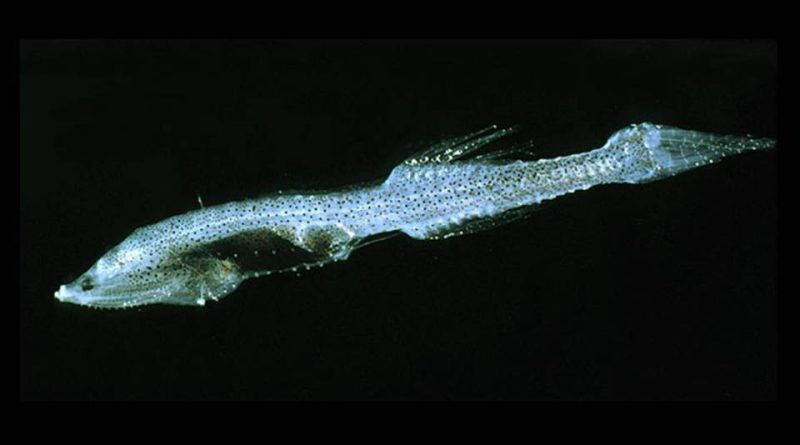Cyclothone pygmaea
Cyclothone pygmaea
The dwarf longmouth (Cyclothone pygmaea Jespersen & Tâning, 1926) is a small fish belonging to the Gonostomatidae family.
Systematics –
From a systematic point of view it belongs to:
Eukaryota domain,
Kingdom Animalia,
Subkingdom Eumetazoa,
Bilateria branch,
Superphylum Deuterostomia,
Phylum Chordata,
Subphylum Vertebrata,
Infraphylum Gnathostomata,
Class Actinopterygii,
Order Stomiiformes,
Gonostomatidae family,
Genus Cyclothone,
C. pygmaea species.
The term is synonymous:
– Cyclothone microdon subsp. pygmaea Jespersen & Taning, 1926.
Geographic Distribution and Habitat –
The Cyclothone pygmaea, whose name derives from the Greek, kyklothen, in circle, around, is a fish endemic to the Mediterranean Sea and present in the Italian seas, in the Tyrrhenian, Ionian and in the southern Adriatic trench.
Its marine habitat, being a bathypelagic fish, is that of oscillating depths between 500 and 1400 m and it is a permanent inhabitant of the southern part of the Adriatic Sea.
Description –
The Cyclothone pygmaea is a fish whose maximum recorded adult length is 3.5 cm, even if, usually, it is around 2 cm, with a blackish colouration; if without scales the body is light brown in colour.
It has an elongated body, very laterally compressed. The body is covered with 27 to 31 large, deciduous cycloid scales along the lateral line.
The head has a short snout and small, circular eyes.
The mouth is relatively large, obliquely cut, with an opening that reaches almost 180°. The premaxilla is short and straight; the maxilla is long and convex. It has a prominent jaw and the teeth are small and pointed, arranged in a single series.
It has 25-30 small photophores located in the lower part of the body. Laterally, however, it has an orbital photophore, two opercula, 8-10 branchiostegal and 7-9 in the ventral region.
The dorsal fin, of 13-14 initially high rays, originates from about half of the body, and has a trapezoidal shape. The anal one, of 18-19 rays, is instead slightly behind the origin of the dorsal; it has a similar shape to the previous one but is much longer. The caudal fin, of 19 rays, is very forked with pointed lobes. The pectoral ones have 9-10 soft rays, are short and set very low. Finally the ventral ones, 6 soft rays, are also short and are inserted closer to the beginning of the anal than to the base of the pectoral fins. This species lacks the dorsal adipose fin.
Biology –
Of Cyclothone pygmaea, like other deep-sea species, little is known about its biology and reproduction. However it is known that its reproductive period is around spring-summer-autumn; in fact it lays its eggs from spring to autumn. Furthermore, with the metamorphosis of the larval stage, it decreases in size.
Ecological Role –
Cyclothone pygmaea was described for the first time in 1926 by the Danish biologists Poul Christian Jespersen (1891-1951) and Åge Vedel Tåning (1890-1958).
The common name of this fish changes in some languages; it is Boccatonda nana in Italian, Nosočica mrka and Nosočica mrkulja in Serbian and Croatian.
It is a bathypelagic fish; in the winter it frequents depths around 1000 m, going up to around 700 m in the summer, so the precise depth range depends on the stage of development and the season.
This fish can however, migrate vertically until it can be found near the surface.
This fish feeds on planktonic organisms, but also on benthic organisms which it takes from the bottom mud.
It is often caught with pelagic trawls but has no commercial value.
Guido Bissanti
Sources
– Wikipedia, the free encyclopedia.
– GBIF, the Global Biodiversity Information Facility.
– Louisy P., 2016. Guide to the identification of marine fish of Europe and the Mediterranean. Il Castello Editore, Milan.
– Nikiforos G., 2008. Fauna of the Mediterranean. Giunti Editore, Florence.
Photo source:
– https://www.fishbase.se/photos/PicturesSummary.php?ID=9989&what=species


